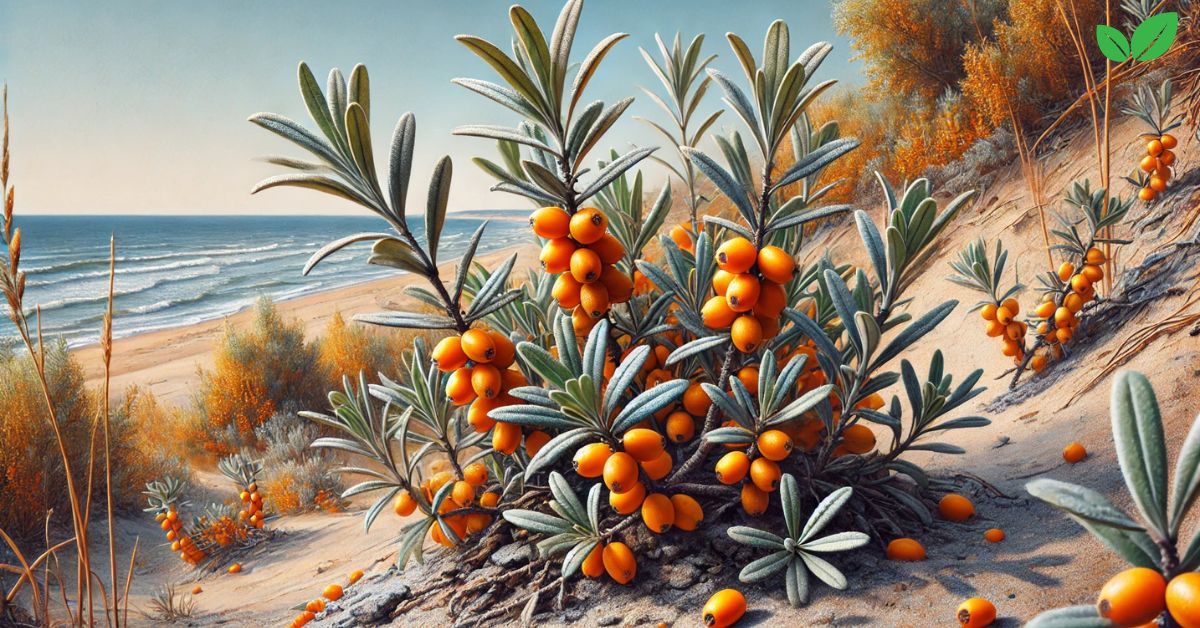Introduction to Sea Buckthorn
Sea buckthorn (Hippophae rhamnoides), also known as Siberian pineapple or sandthorn, is a resilient and versatile shrub that grows in challenging environments, particularly along coastal regions, riverbanks, and mountainous areas. This plant, belonging to the Elaeagnaceae family, is known for its bright orange berries, silvery-green leaves, and thorny branches. Sea buckthorn has a long history of use in traditional medicine, agriculture, and even cosmetics due to the nutrient-rich oil extracted from its berries, which are packed with vitamins, antioxidants, and fatty acids.
However, the environmental significance of this shrub extends far beyond its practical uses. As a pioneer species, sea buckthorn plays a critical role in stabilizing soil, preventing erosion, and supporting biodiversity in fragile ecosystems. It thrives in nutrient-poor, sandy soils and harsh climates, making it a vital component of the ecological balance in many coastal and arid regions. Understanding the environmental niche of sea buckthorn and its interactions with other species is essential for conservation efforts, particularly in areas vulnerable to climate change, land degradation, and habitat loss.
This article explores the ecological role of sea buckthorn, its adaptation to challenging environments, its contribution to biodiversity, and the conservation measures that can help preserve this important plant in the face of environmental challenges.
Botanical Characteristics of Sea Buckthorn
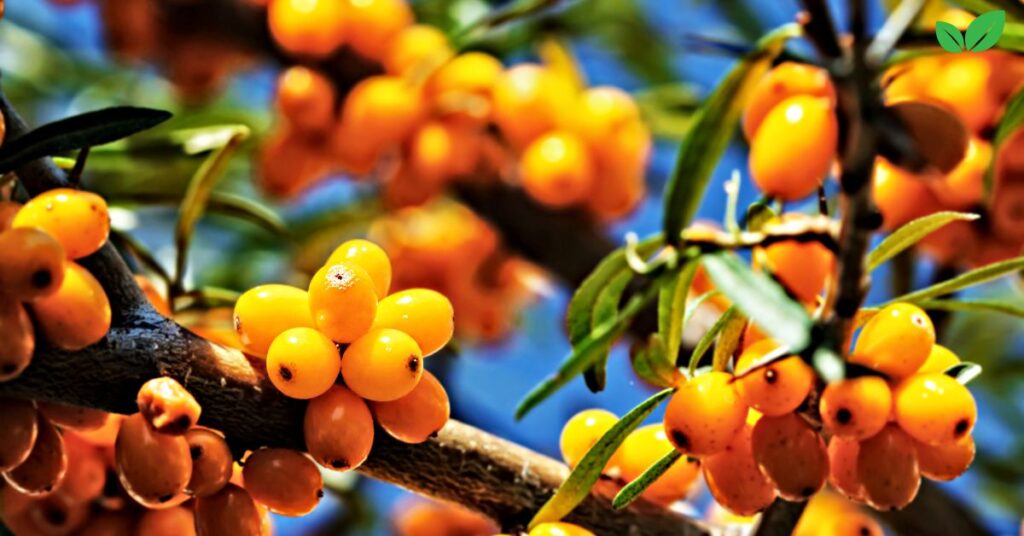
Morphology and Growth Habit
Sea buckthorn is a hardy, deciduous shrub that typically grows to a height of 2 to 6 meters (6.5 to 20 feet), though it can sometimes reach up to 10 meters (33 feet) in optimal conditions. The plant is characterized by its dense, thorny branches and narrow, lance-shaped leaves, which are covered in fine silvery hairs. These hairs help reduce water loss through transpiration, making sea buckthorn well-adapted to arid and coastal environments where moisture is often limited.
The most striking feature of sea buckthorn is its bright orange or yellow berries, which appear in late summer and early autumn. These berries grow in dense clusters along the branches and are rich in nutrients, including vitamins C, E, and A, as well as omega fatty acids. The berries are not only important for human consumption but also serve as a critical food source for wildlife during the winter months when other food sources may be scarce.
Sea buckthorn’s extensive root system is another key feature that contributes to its ability to thrive in difficult environments. The plant forms a symbiotic relationship with nitrogen-fixing bacteria, allowing it to convert atmospheric nitrogen into a usable form for growth. This adaptation enables sea buckthorn to grow in nutrient-poor soils and helps improve soil fertility over time.
Reproductive Strategies and Pollination
Sea buckthorn is dioecious, meaning that individual plants are either male or female. Male plants produce pollen, while female plants bear fruit after successful pollination. Wind is the primary pollinator for sea buckthorn, with pollen carried from male to female plants during the spring. Since only female plants produce berries, it is essential to have a balanced population of male and female plants to ensure successful reproduction and fruiting.
The plant reproduces both sexually through seeds and vegetatively through root suckers. This vegetative reproduction allows sea buckthorn to spread rapidly and form dense thickets, which can play a critical role in stabilizing loose, sandy soils and preventing erosion in coastal and riverbank environments.
The Environmental Niche of Sea Buckthorn

Habitat Preferences
Sea buckthorn is highly adaptable and thrives in a variety of harsh environments. Its natural habitat includes coastal dunes, riverbanks, and mountain slopes, where it often serves as a pioneer species, colonizing disturbed or degraded lands. The plant’s tolerance for poor, sandy soils, high salinity, and drought conditions allows it to grow in areas where few other plants can survive. As a result, sea buckthorn is commonly found in coastal regions across Europe and Asia, as well as in arid or semi-arid regions such as the Tibetan Plateau.
The plant’s extensive root system, combined with its ability to fix nitrogen, makes it a key player in soil stabilization and ecosystem restoration. Sea buckthorn is often used in reforestation and land reclamation projects in regions affected by desertification, erosion, or deforestation. Its presence can improve soil structure, increase organic matter content, and enhance the overall fertility of the soil, making it easier for other plant species to establish themselves in degraded habitats.
Coastal and Riverbank Ecosystems
In coastal and riverbank ecosystems, sea buckthorn plays a critical role in stabilizing loose soils and preventing erosion. The plant’s deep root system binds the soil, reducing the impact of wind and water erosion. This is especially important in coastal dunes, where sea buckthorn helps maintain the integrity of the landscape by preventing the loss of sand and preserving the habitat for other plant and animal species.
Additionally, it provides a habitat for a variety of wildlife, including birds, insects, and small mammals. The dense thickets formed by sea buckthorn offer shelter and nesting sites for birds, while the berries provide a valuable food source during the winter months. This makes sea buckthorn an important species for maintaining biodiversity in coastal and riparian ecosystems, where it helps support a complex web of life.
Adaptations to Harsh Conditions
It has evolved several adaptations that allow it to thrive in challenging environments. One of its most important adaptations is its ability to fix nitrogen through a symbiotic relationship with Frankia bacteria. This enables the plant to grow in nutrient-poor soils where other species might struggle. By enriching the soil with nitrogen, sea buckthorn not only supports its own growth but also improves the conditions for other plants in the area, facilitating ecological succession and habitat recovery.
The plant’s silvery, hairy leaves are another adaptation that helps it to survive in arid and windy environments. The fine hairs on the leaves reduce water loss by reflecting sunlight and minimizing transpiration, which is especially important in coastal areas where the combination of salt spray and strong winds can create harsh growing conditions.
Sea buckthorn’s tolerance for salinity also allows it to thrive in coastal ecosystems. The plant is capable of growing in soils with high salt content, which is a common characteristic of coastal habitats. This ability to tolerate saline conditions makes it an important species for stabilizing coastal dunes and protecting shorelines from erosion.
Ecological Significance of Sea Buckthorn
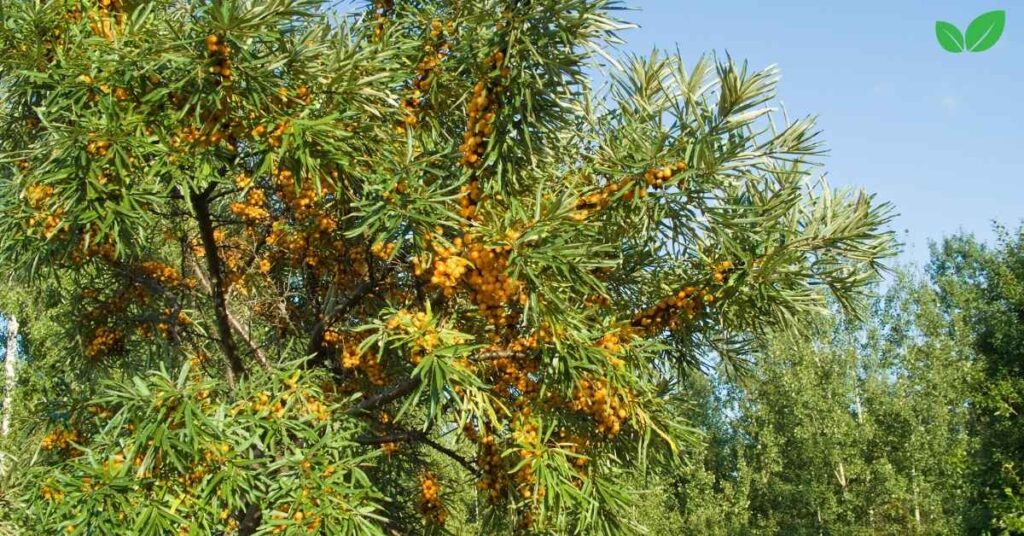
Soil Stabilization and Erosion Control
One of the most critical ecological roles of sea buckthorn is its ability to stabilize soil and prevent erosion, particularly in coastal and riverbank ecosystems. Its deep, fibrous root system binds the soil together, reducing the likelihood of soil loss due to wind and water erosion. This function is especially important in regions prone to desertification, such as parts of northern China and Central Asia, where it has been used in large-scale reforestation and land reclamation projects to combat soil degradation.
Sea buckthorn’s role in preventing erosion is also vital in coastal areas, where dunes and sandy soils are vulnerable to shifting winds and tides. Dense thickets help anchor the soil, prevent the movement of sand, and protect the habitat of other plant and animal species. In riverbank ecosystems, sea buckthorn reduces the risk of flooding by stabilizing the banks and slowing down the flow of water, which helps to prevent soil from being washed away.
Biodiversity Support
Sea buckthorn provides essential habitat and food for a wide range of wildlife. The dense thickets formed by the plant offer shelter for birds, small mammals, and insects, making it an important species for maintaining biodiversity in coastal, riverbank, and mountainous ecosystems.
Birds, in particular, benefit from the presence of sea buckthorn. During the autumn and winter months, when other food sources may be scarce, birds such as waxwings, thrushes, and finches rely on the nutrient-rich berries for sustenance. The berries are also consumed by mammals like foxes, deer, and rodents, further highlighting the plant’s importance as a food source in harsh environments.
In addition to providing food, it supports a variety of pollinators, including bees, butterflies, and other insects. Although wind is the primary pollinator of sea buckthorn, the plant’s flowers still attract insect pollinators, which contribute to the overall health of the ecosystem by facilitating the reproduction of other flowering plants in the area.
Role in Ecosystem Restoration
Due to its adaptability and resilience, it is frequently used in ecosystem restoration projects. In regions affected by desertification, overgrazing, or deforestation, sea buckthorn can help restore degraded lands by improving soil fertility, increasing plant diversity, and stabilizing the landscape. Its ability to fix nitrogen allows it to enrich the soil with nutrients, creating a more hospitable environment for other plant species to establish themselves.
In reforestation efforts, it is often used as a pioneer species to prepare the land for the introduction of other native plants. By improving soil structure and fertility, sea buckthorn facilitates the gradual recovery of ecosystems that have been damaged by human activity or natural disasters. This makes it a valuable tool in the fight against land degradation and habitat loss, particularly in regions where environmental conditions are harsh.
Threats to Sea Buckthorn Populations
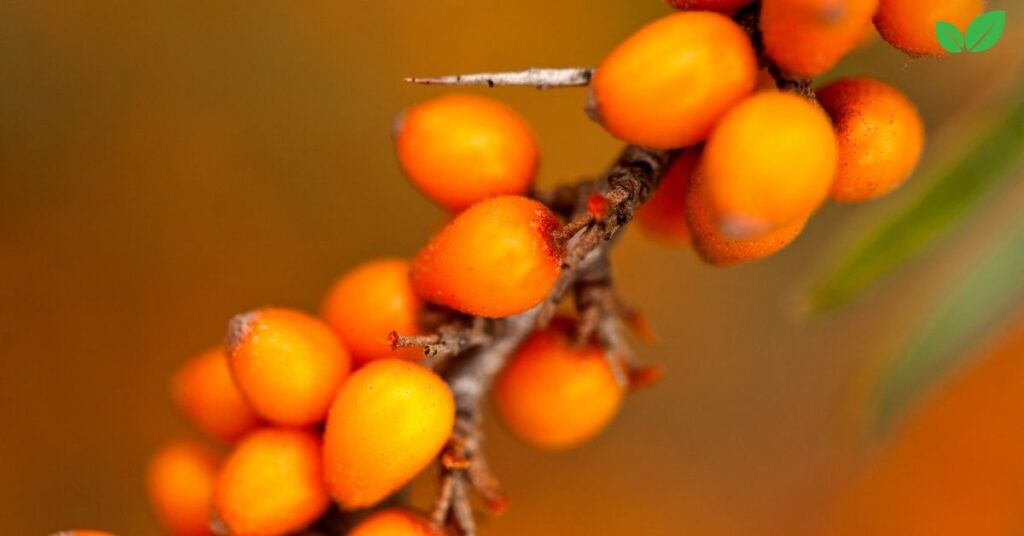
Habitat Loss and Land Development
Despite its resilience, sea buckthorn faces several threats, particularly from habitat loss due to human activities. Coastal and riverbank ecosystems, where it is commonly found, are often subject to land development for tourism, agriculture, or urban expansion. As natural habitats are converted into farmland, residential areas, or infrastructure projects, sea buckthorn populations may decline due to the loss of suitable growing conditions.
In addition to direct habitat loss, land development can lead to changes in soil composition, water availability, and other environmental factors that affect the health of sea buckthorn populations. For example, coastal development often involves the construction of roads, buildings, and other infrastructure that can disrupt natural water flow and alter soil conditions. These changes can make it more difficult for it to establish and maintain healthy populations, especially in areas where the plant plays a key role in stabilizing soils and preventing erosion.
In addition to habitat loss, land-use changes can fragment sea buckthorn populations, isolating them from one another. This fragmentation reduces genetic diversity and makes it more challenging for the plant to adapt to changing environmental conditions. Isolated populations are also more vulnerable to local extinctions, particularly if they are exposed to additional stressors such as pollution or climate change.
Overgrazing and Agricultural Practices
In some regions, overgrazing by livestock poses a significant threat to sea buckthorn populations. While it is known for its resilience, heavy grazing pressure can damage young plants and prevent them from establishing. In areas where grazing is intense, the destruction of this species and other vegetation can lead to increased soil erosion, further degrading the habitat and making it even more difficult for the plant to recover.
In agricultural landscapes, the use of pesticides and herbicides can also have negative impacts on sea buckthorn. These chemicals can reduce the plant’s ability to thrive by altering soil chemistry or directly damaging the plant and the microorganisms it relies on for nitrogen fixation. In some cases, sea buckthorn may also be removed during land-clearing activities to make way for crops or pastureland, further contributing to habitat loss.
Climate Change
Climate change poses a significant threat to sea buckthorn and the ecosystems it supports. As temperatures rise and weather patterns become more unpredictable, coastal and mountainous ecosystems may experience shifts in vegetation and soil conditions that affect the ability of sea buckthorn to thrive. Changes in precipitation patterns, for example, could lead to either increased droughts or more frequent flooding, both of which can negatively impact sea buckthorn populations.
In coastal regions, rising sea levels due to climate change may submerge areas where sea buckthorn currently grows, reducing the availability of suitable habitats. Similarly, increased storm intensity could result in more severe erosion, which may overwhelm the plant’s ability to stabilize soil and protect against further land degradation. In mountainous regions, shifting climate zones could alter the distribution of sea buckthorn, forcing it to move to higher elevations where conditions may become less hospitable.
Additionally, climate change may affect the availability of pollinators and the timing of fruiting and flowering seasons. These shifts could disrupt the reproductive cycle of sea buckthorn and reduce its overall population resilience.
Invasive Species
In some regions, sea buckthorn faces competition from invasive species, which can outcompete it for resources such as water, sunlight, and nutrients. Invasive plants may establish themselves more rapidly in disturbed or degraded environments, reducing the availability of space for native species like sea buckthorn. This competition can lead to a decline in its populations, particularly in areas where the plant plays a key role in stabilizing ecosystems and supporting biodiversity.
Invasive animals, such as certain herbivores, can also pose a threat to sea buckthorn by consuming young plants or damaging their root systems. This can further exacerbate the negative effects of habitat loss, overgrazing, and other stressors.
Conservation Efforts for Sea Buckthorn
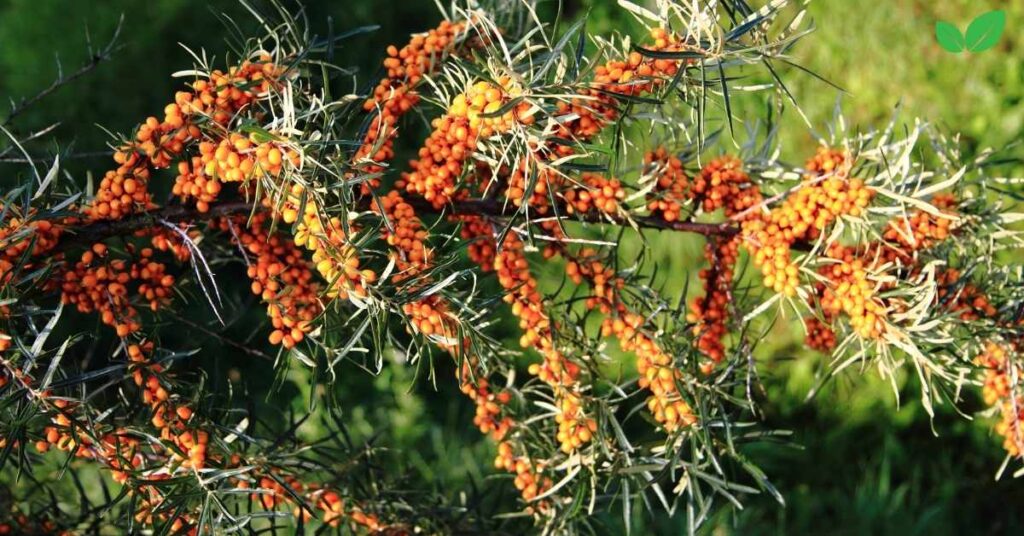
Habitat Protection and Restoration
One of the most effective strategies for conserving its populations is the protection and restoration of their natural habitats. In coastal and riverbank ecosystems, efforts to prevent habitat destruction and fragmentation are essential for maintaining healthy populations of sea buckthorn. This can be achieved through the establishment of protected areas, such as nature reserves or conservation zones, where land development and other harmful activities are restricted.
In addition to protecting existing habitats, restoration projects can help rehabilitate areas that have been degraded by erosion, overgrazing, or other forms of environmental damage. Planting it in these areas can help stabilize soils, improve soil fertility, and support the recovery of other native plant species. These restoration efforts often involve the collaboration of government agencies, conservation organizations, and local communities.
Sustainable Land-Use Practices
Promoting sustainable land-use practices is another important strategy for conserving it. In agricultural regions, reducing the use of pesticides and herbicides can help protect sea buckthorn and other native plant species. Implementing grazing management strategies, such as rotational grazing or limiting the number of livestock in sensitive areas, can also reduce the pressure on sea buckthorn populations and prevent soil degradation.
In coastal areas, sustainable tourism practices can help minimize the impact of human activity on sea buckthorn habitats. This may include measures such as restricting access to sensitive dune systems, educating visitors about the importance of sea buckthorn in stabilizing coastal ecosystems, and reducing pollution from recreational activities.
Climate Change Mitigation and Adaptation
Addressing the impacts of climate change on sea buckthorn populations requires both mitigation and adaptation strategies. Mitigating climate change by reducing greenhouse gas emissions can help slow the rate of environmental changes that threaten sea buckthorn and other plant species. This can be achieved through policies that promote renewable energy, energy efficiency, and sustainable agriculture.
In addition to mitigation efforts, adaptation strategies are needed to help its populations cope with the effects of climate change. This may involve identifying areas where sea buckthorn can be planted to support habitat restoration, even as climate zones shift. Protecting corridors of natural habitat can also help facilitate the movement of sea buckthorn and other species as they respond to changing environmental conditions.
Public Awareness and Education
Raising public awareness about the ecological importance of sea buckthorn is critical for its conservation. Many people are unaware of the plant’s role in stabilizing ecosystems, supporting biodiversity, and providing valuable ecosystem services such as soil enrichment and erosion control. Educational campaigns that highlight the benefits of this plant can encourage individuals and communities to take action to protect this important plant.
Public engagement in conservation efforts can also help gather valuable data on sea buckthorn populations. Citizen science programs, where volunteers monitor the health and distribution of it in their local areas, can provide researchers with important information on how the plant is responding to environmental changes. By involving the public in conservation efforts, these programs can foster a sense of stewardship and responsibility for protecting sea buckthorn and its habitats.
The Future of Sea Buckthorn in a Changing World
Sea buckthorn’s resilience and adaptability make it a valuable species in the fight against land degradation, erosion, and biodiversity loss. However, the future of it will depend on our ability to address the environmental challenges it faces. Habitat loss, climate change, overgrazing, and competition from invasive species all threaten sea buckthorn populations, and concerted efforts are needed to ensure their survival.

By protecting and restoring sea buckthorn habitats, promoting sustainable land-use practices, and addressing the impacts of climate change, we can help preserve this important plant for future generations. It plays a vital role in maintaining the health of ecosystems, supporting biodiversity, and providing ecosystem services that benefit both wildlife and human communities. Its conservation is not only important for the species itself but also for the broader environmental stability of the regions in which it grows.
Conclusion
Sea buckthorn is more than just a resilient coastal shrub with nutrient-rich berries. It is a keystone species in many ecosystems, playing a crucial role in stabilizing soils, supporting biodiversity, and enriching soil fertility. As a pioneer species, sea buckthorn helps restore degraded landscapes and prevent further environmental damage, making it a valuable tool in the fight against erosion and land degradation.
However, like many species, sea buckthorn faces a number of threats, from habitat loss and overgrazing to the impacts of climate change and invasive species. By implementing conservation strategies that protect its habitats, promote sustainable land use, and raise public awareness, we can ensure that sea buckthorn continues to thrive in the ecosystems it helps support.
As we face an uncertain environmental future, the resilience of species like this will be critical for maintaining the health and balance of ecosystems around the world. By understanding and protecting the environmental niche of sea buckthorn, we can take meaningful steps toward a more sustainable and biodiverse world.
Read More: Golden Duranta: The Environmental Benefits of This Stunning Ornamental Plant

